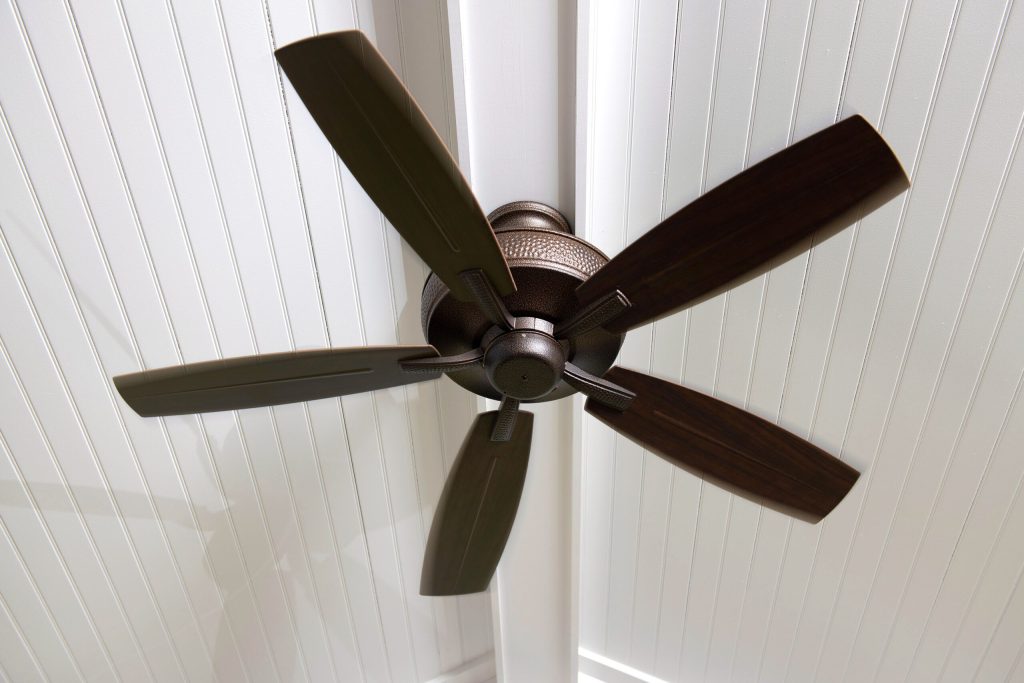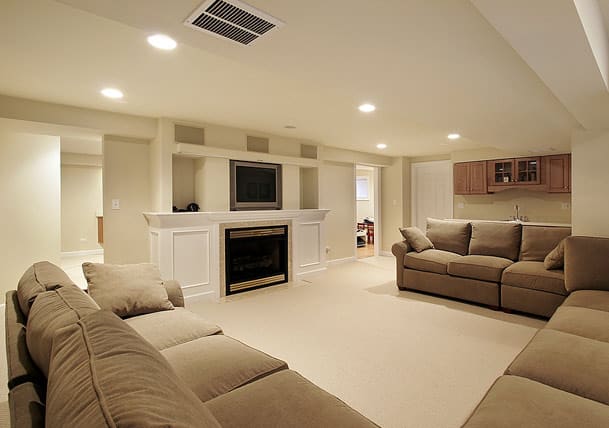Installing a ceiling fan can make a big difference in your home’s comfort and energy efficiency. Unfortunately, simply following the manufacturer’s instructions is only a small part of ceiling fan installation.
Even minor mistakes while installing the fan can result in subpar performance, create safety concerns, and shorten its life.
In the following article, you will have a new appreciation of hiring professionals and learn some actionable advice on how to preemptively eliminate five mistakes before attempting to change your ceiling fan.
1. Using Fans of Incorrect Size in the Room
The size of the fan and room is a common mistake when it comes to ceiling fans. If the fan is too small for a space, it will be unable to circulate air effectively and if it’s too large, it can overpower the room with uncomfortable drafts.
To rectify this, measure the room and select a fan with an appropriate blade span size. Small rooms use 36- to 42-inch blades and big rooms typically use 44-inch blades.
Choosing the right size fan for your space ensures proper air circulation and maximum comfort.
2. Completely Disregarding Ceiling Height and Mounting Needed

Underestimating the ceiling height and mounting needs of your fan is another big mistake homeowners make during installation. Since your ceiling height will determine which mounting option is best for airflow and safety, flush mount or hugger fans should be used for ceilings under eight feet tall.
Fans with a universal download will work for standard ceilings. When you’re dealing with ceilings more than ten feet high, then the ideal height for your fan is to be seven or nine feet off of the floor. A basic download will need to be around 36 inches long to place it at its optimal distance.
Without evaluating these factors, there is likely to be insufficient ventilation resulting in an unsafe environment. Make sure that fan blades have enough clearance from the ceiling and floor to operate efficiently without interfering with each other.
3. Skipping the Electrical Box Upgrade
The most important but frequently skipped item to look for while setting up a ceiling fan is changing the electrical box. Because ceiling fans are typically heavier and produce more vibration than a standard light fixture, they should never be installed on an ordinary lighting box. Without a proper electrical box, your ceiling fan can endanger the unit.
Any existing light fixture electrical box the ceiling fan will be installed over should always have a specific rating for use with a ceiling fan.
This makes certain the fan is properly secured and runs safely. This type of upgrade might sound complicated and if you are nervous about taking on electrical work, contact a licensed electrician in your area.
4. Improper Wiring Connections

A very common mistake connected to this issue is improper wiring connections; both of which result in either the fan not functioning at all or immediate electrical problems. Making sure all electrical connections are correct is a must, and more importantly that they’re locked down securely.
All ceiling fans have color-coded wires to make it easy, but always be cautious and abide by the wiring diagram that is provided straight from your fan manufacturer. Secure the connections using wire nuts and ensure that they are tight-fitting, and insulated correctly.
Connecting the wires improperly can either have your fan not running properly, lights flickering in color, or cause an electrical short. If you are not sure about working with electrical wiring or anything else mechanical, then it’s recommend that you have a professional help reduce any risks involved.
5. Not Balancing the Fan Blades
After the ceiling fan is installed, the wobbling will take another place of the most frustrating things that could be happen. This is a common issue due to the failure to adequately balance fan blades. An out-of-balance blade may generate extra noise, deliver less effective service, and contribute to more wear in the fan motor.
Once you have installed the fan, balance it from a kit that will be given to you by the manufacturer. In this, tiny weights are used to balance out the weight of each blade. Balancing the blades will mean less noise, smooth operation, and a longer life for your fan motor.
Installing a ceiling fan correctly greatly increases the comfort and energy efficiency of your home. Avoiding common mistakes like picking the wrong fan size, not considering ceiling height and mounting requirements, skipping an electrical box upgrade, making bad wire connections, or failing to balance the blades will go a long way during installation.
It is important to plan carefully and attend to details for the fan system to deliver maximum performance. You may have a lot of experience with do-it-yourself solutions or maybe you are fairly new to the process, but following these ceiling fan installation directions will help prevent any mishaps and have a unit that lasts for several years.











